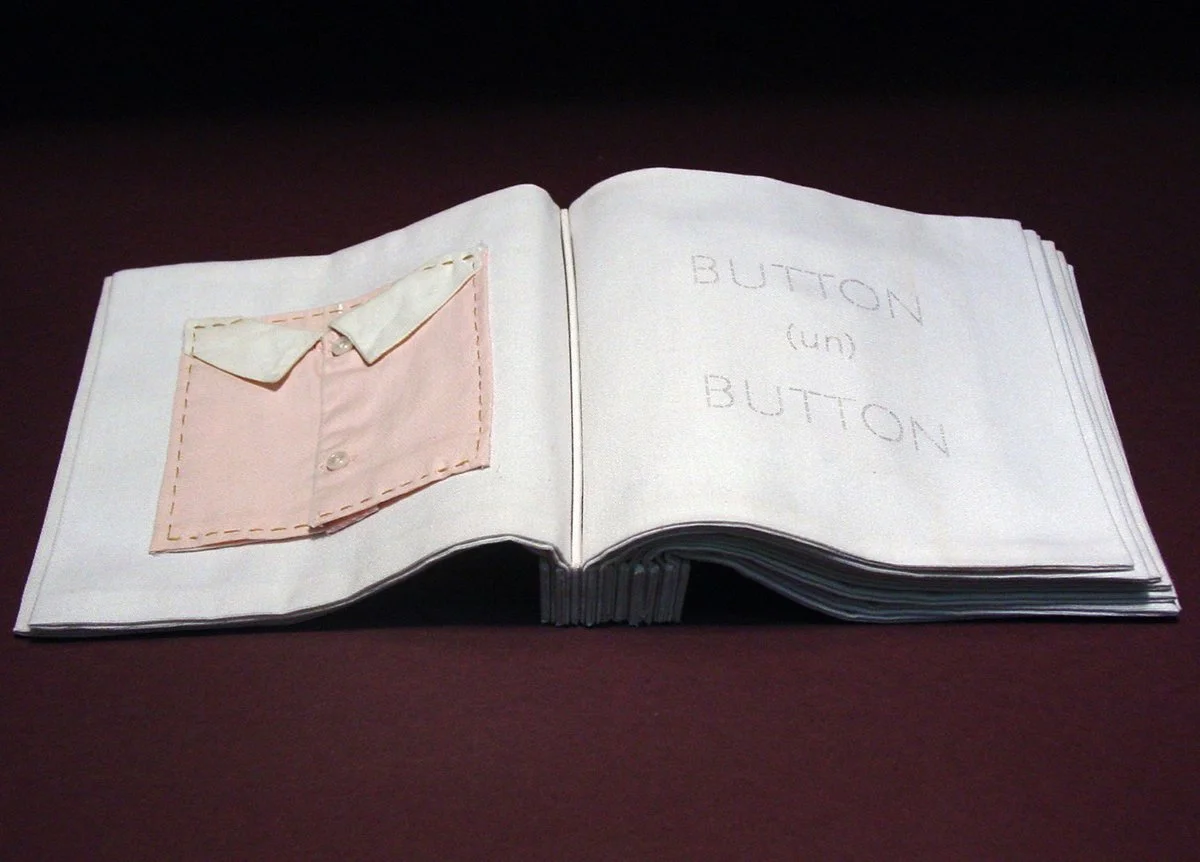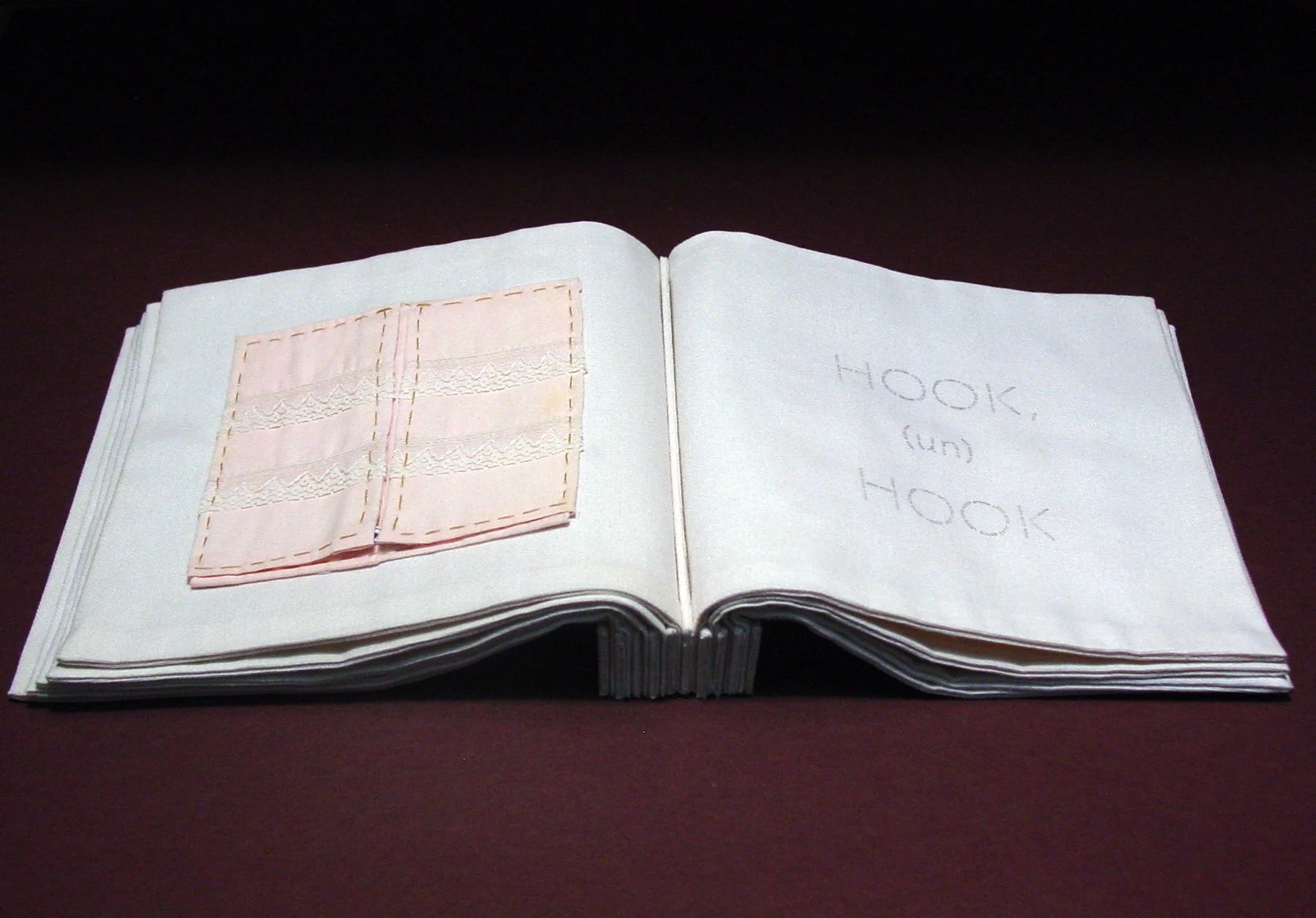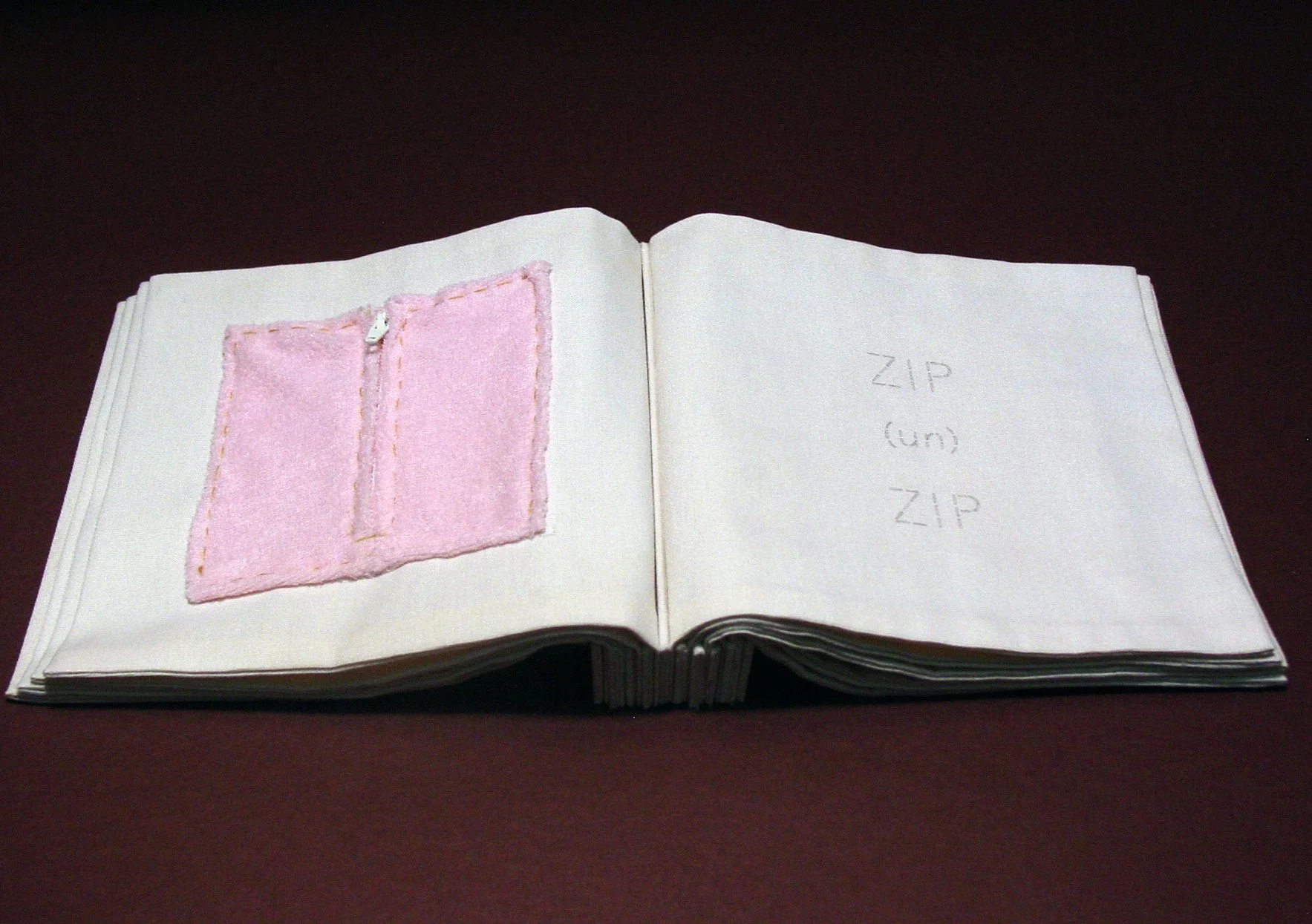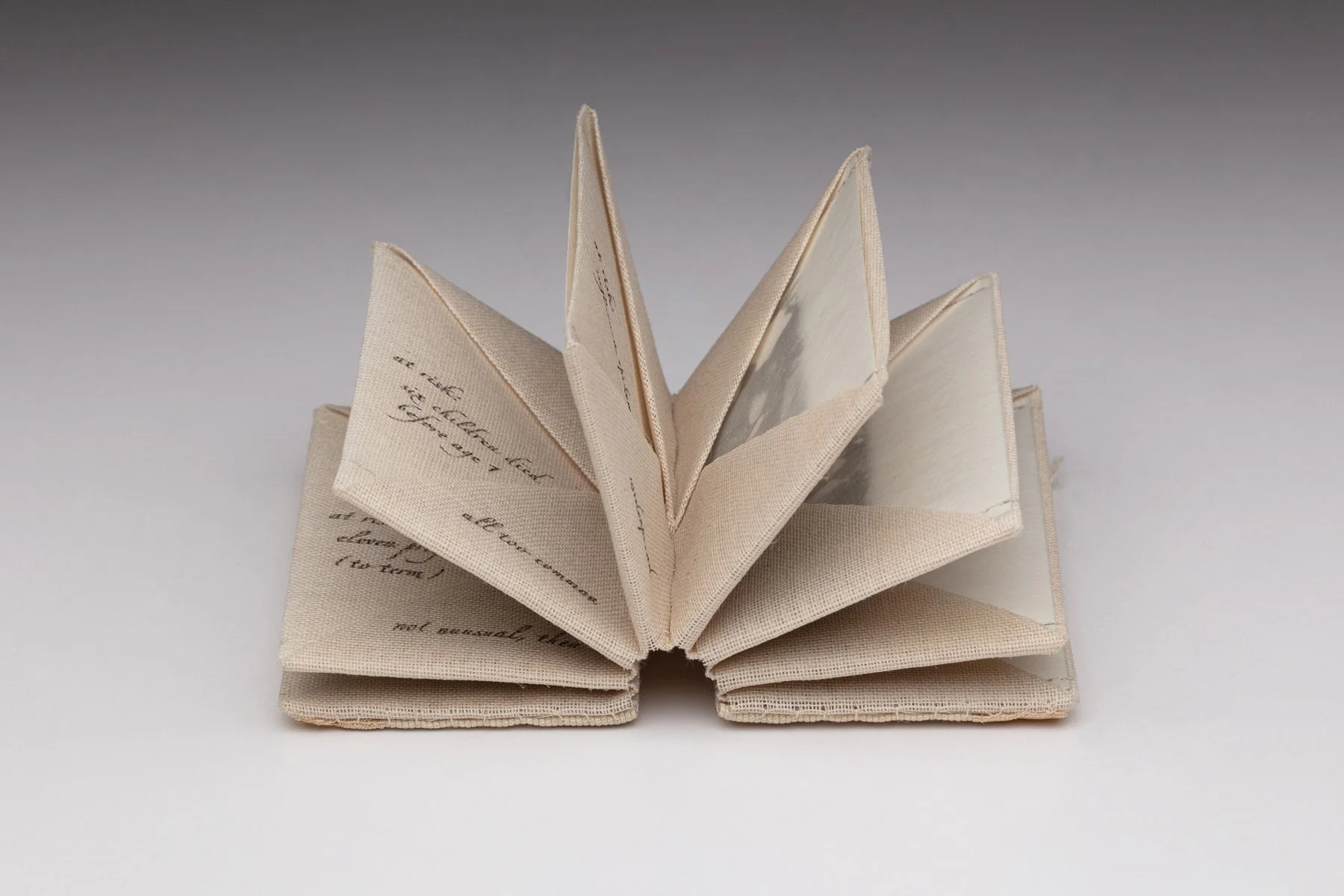
Photos by the artist.
Edition
edition of 2
Measurements
6.875” x 7.75” x 1.75” closed; 6.875” x 14.25” x 1.5” each two-page spread
In The Collection Of
The Sallie Bingham Center for Women’s History and Culture, Rubenstein Library, Duke University
Special Collections, University of Denver Penrose Library
About the Book:
Her (un) Doing is inspired by a fabric book from 1950 entitled All By Herself, in which a little girl gets dressed and the young reader practices doing the buttons, snaps and ties on her clothing. Like its inspiration, Her (un) Doing also reduces getting dressed to encounters with clothing fasteners, while also examining how small girls are “fastened” into a gender. Each page spread displays a piece of vintage girls’ clothing and highlights a functional fastener, which opens to reveal layers underneath.
Watching individuals open and read this book has been a revelatory experience for me, as most are immediately drawn in to feeling the fabrics and working the fasteners but are taken aback partway through to realize they are also apparently helping undress a little girl. I designed it this way, but it still surprises me when it functions as intended.
This work has also been reworked and shown as individual wall-hung pieces in a gallery setting, with three units per page of the book. These can be viewed here and some sets are available for purchase.
About the Text:
In the original All By Herself book, the text is simple and large, as consumers of fabric books would likely also be early readers. I also elected to keep the text for Her (un)Doing oversized and minimal for easy reading so the garments and fasteners would be foregrounded. Each page briefly indicates both the “doing up” of fasteners and the “(un)doing”: HOOK – (un)HOOK, ZIP – (un)ZIP, TIE – (un)TIE, etc.
About the Materials and Processes:
In creating this book, I chose to use fasteners from actual clothing rather than new fasteners with no history. All of the clothing used in Her (un)Doing was previously worn and many pieces came to me with stains or tears. After deconstructing each garment, I selected a portion with its fastener and hand-stitched that selection to a page using upholstery thread; each garment was also selectively hand painted. The pages are made from a poplin fabric and are machine stitched. The spine pieces are cut from Davey board and the book is bound in a stab binding-style using upholstery thread. The font is based on Optima and the text forms were digitally created. The text was color laser printed and transferred to the fabric surfaces using a xylene solvent.









